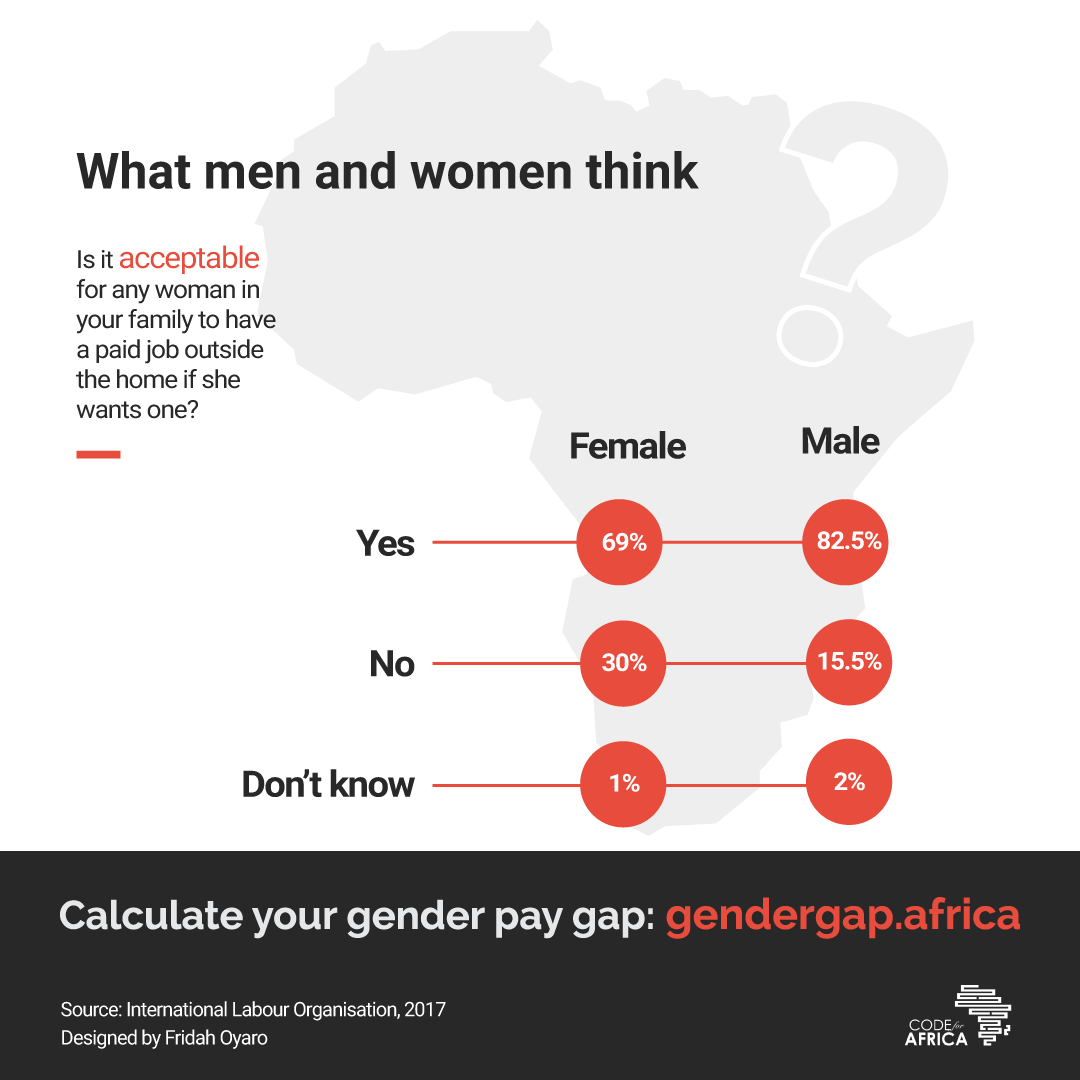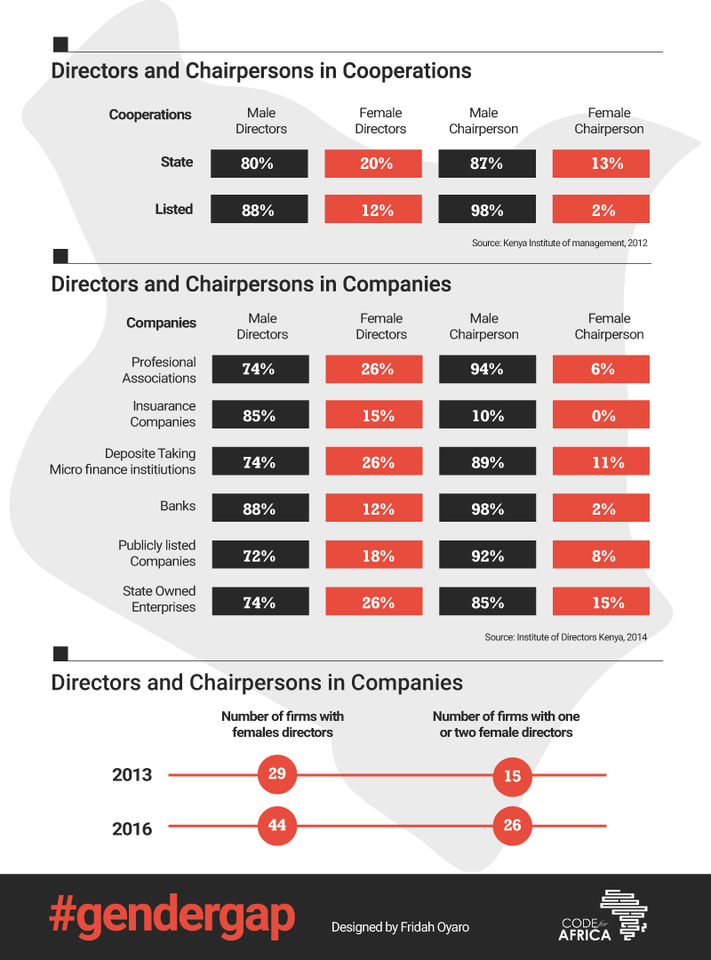Mary Okello is one of Kenya’s trailblazers. In 1977, she became the first Kenyan woman bank manager. She did not sit on her laurels, instead she decided to push for more women to access the formal banking sector as a founder member of the Kenya Women Finance Trust, the only micro-finance institution which lives up to its slogan ‘banking on women.’
Ms Okello’s struggle to the top was made at a time when “women would not even be promoted to managerial positions. Most women those days were clerks, cashiers, sweepers and tea girls!”, she said in an interview a few years ago.
By the time she left the bank in 1985, Mary Okello had helped set up the Barclays Bank Women’s Association whose objective was to mentor women, equip them with knowledge and encourage them to challenge the status quo. Barclays Bank now prides itself of having the highest number of female managers in Kenya and currently has achieved gender parity on the board. The gender ratio at the board level stands at 50:50 with the employee ratio being 48:52 in favour of the men.
The gender diversity at Barclays is however not reflected in most of the boardrooms and top management levels of listed companies or even state corporations. A Women in the Boardroom survey conducted by the Institute of Directors in 2015 found that banking and financial institutions had the lowest women representation (12 percent) compared to professional associations (26 percent), insurance companies (15 percent) and micro-finance institutions (26 percent).
Publicly listed companies performed slightly better than banks with women representation at the board level standing at 18percentt while state-owned enterprises continued to outperform the private sector with women comprising 26 percent of the board. This is in part due to legal requirement that there should be a minimum one third gender representation in government and state corporations.
The affirmative action (as represented by the two-thirds gender rule) and progressive public sector policies has been cited as a reason for Kenya taking the lead in a Where are the Women survey conducted by the African Development Bank in 12 African countries. Kenya was ranked first with about 20 percent women represented in the boards of the top listed companies slightly ahead of South Africa (17.4 percent) and Botswana (16.9percentt).
There is a growing body of research which shows a clear and positive correlation between increased gender diversity at top levels of corporate leadership and better company performance. The fundamental business case for more women on boards and in senior leadership positions is fast becoming undeniable: reduced risk, better decision-making, increased collaboration and broader market perspective, among many other benefits.
“Women’s representation on boards is not only a gender equality issue but is also a performance optimization strategy. More and more evidence shows a better gender mix among senior management is linked with better results such as greater profitability,” Geraldine J. Fraser-Moleketi Special Envoy on Gender at the African Development Bank said in a forward to a survey looking at the number of women board of directors in the top listed companies in 12 African countries.

“Plugging the leaks in the talent pipeline is clearly a top priority and there are opportunities at every transition point in it. Africa can “rise” only if both halves of our Continent have the same opportunities, and are provided with the chance to develop their talents and put them towards creating prosperity for Africa,” she suggested.
The question is why with so much evidence pointing to the value of increased women’s participation on boards and in senior leadership, why aren’t there more women serving in these positions? How can the women breakthrough— or at least crack— the glass ceiling?
A 2017 KIM Leadership and Diversity Research survey of 52 out of the listed 62 companies revealed that women representation in the boards of listed companies had improved slightly from the 2015 outlook.
The number of women board members had risen to 21 percent from 18 percent recorded during the 2015 survey by the Institute of Directors. This simply means that for every female board member, there were now four male members of the board.
Of the 52 companies listed, only five had a female board chairperson, which was no different from a previous survey conducted in 2012. Women represent 7.7 percent of the board members which is favourable compared to the global average of four percent including in advanced markets like the US, Canada and Europe. At the current rate of growth, gender parity in the corporate boards might be reached by 2030.
Majority of the women board members are to be found in the retail sector which however represents less than two percent of the total directors of the 52 companies that were sampled. The sectors with the lowest women representation were in Agriculture (nine percent), media (eight percent) tourism and hospitality (eight percent).
Women representation on the board was also highly skewed in their favour if the company was a subsidiary or partly-owned by foreign multinationals. According to the survey, the average women representation on Kenyan boards is 21 percent, the representation in indigenous owned companies was 20 percent while representation in companies which were local subsidiaries of multinational or foreign-owned was 27 percent.

The National Gender and Equality Commission survey released last year indicated that women serving on the boards were more likely to have a higher level of education than their male counterparts.
Several recommendations have been made to encourage gender parity in the corporate boardrooms. Making it mandatory for all publicly listed companies to report on their board composition annually and whenever changes happen will encourage transparency in the appointment of members since qualifications are often brought to question when the issue of women directors is raised. This information should be made accessible to the public through the Nairobi Stock Exchange (NSE) as well as through the Capital Market Authority.
Reporting should also be extended to include data on where women who are in senior management. Not only would this help in collecting necessary data which can inform policy interventions, but will also clarify how each company defines a company ‘officer.’
The NSE should also consider including board diversity as a listing requirement for member companies similar to the Australian Stock Exchange (ASX), currently considered the ‘gold standard’ on what Stock Exchanges can do to advance women into board directors’ position. The ASX was the first in the world to institute gender diversity on boards as a listing requirement, which means that member companies must report annually on the percentage of women on boards, in senior management and in their overall workforce.








